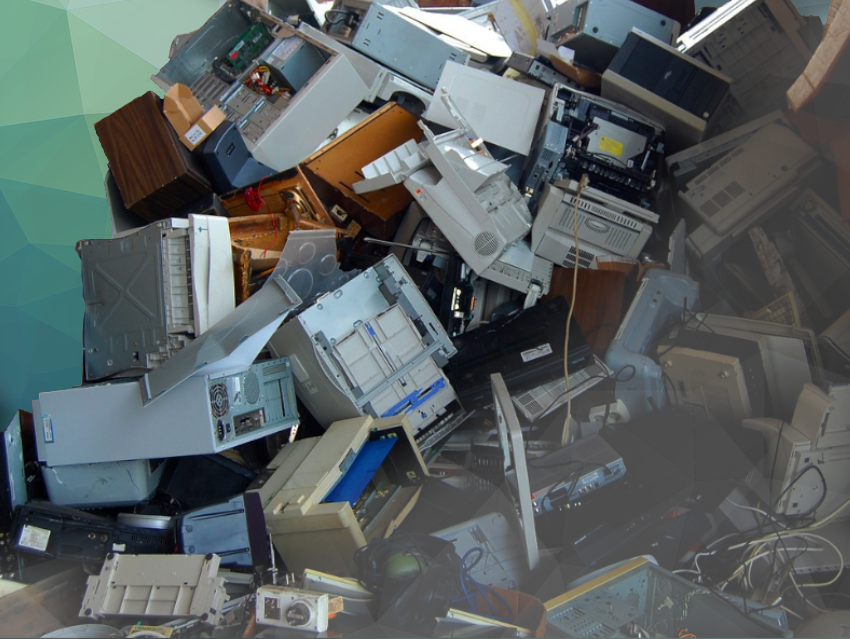According to the Global E-Waste Monitor, published by the United Nations (UN) organizations International Telecommunication Union (ITU) and United Nations Institute for Training and Research (UNITAR), the amount of e-waste produced worldwide is growing rapidly every year. The report compiles figures on the global production, trade, and recycling of e-waste. It defines e-waste as “anything with a plug or a battery”, including smartphones, monitors, refrigerators, and solar panels. When electrical and electronic equipment is disposed of, it creates a waste stream containing both hazardous and valuable materials. This is collectively referred to as e-waste or waste electrical and electronic equipment (WEEE). Environmentally sound e-waste management systems prevent damage to the environment and help recover secondary raw materials and avoid emissions.
In 2022, 62 billion kg of e-waste was generated worldwide, an average of 7.8 kg per capita per year. Only 22.3% of this was formally collected and recycled in an environmentally sound manner. Compared to 34 billion kg of e-waste in 2010, with a formal collection and recycling rate of 0.5 billion kg per year, the increase in e-waste generation outpaces recycling by almost five times. This is due to technological advances, increased consumption, limited repair options, short product lifecycles, increasing electronification, and inadequate e-waste management infrastructure. E-waste generated in 2022 contained 31 billion kg of metals, 17 billion kg of plastics and 14 billion kg of other materials such as minerals, glass, composite materials.
According to the report, the amount of e-waste generated per capita in kg is: Europe 17,6, Oceania 16,1, Americas 14,1, Asia 6,6, Africa 2,5, and the average annual official collection and recycling rate: Europe 42,8%, Oceania 41,4%, Americas 30%, Asia 11,8%, Africa 0,7%.
Current e-waste management practices result in around USD 28 billion worth of metals being turned into secondary raw materials worldwide in 2022. However, the overall impact of e-waste management
represents a net cost of approximately USD 37 billion, mainly in the form of externalized health and environmental costs arising from unmanaged hazardous substances and emissions of greenhouse gases.
Reducing waste requires reducing sales volumes, while the global inclusion of e-waste in municipal solid waste, which is landfilling or incineration, is a significant challenge. The economic value of metals within e-waste, estimated at USD 91 billion globally in 2022, underscores the potential for resource recovery. In particular, metals like copper, iron, gold, nickel, and aluminum, which account for about two-thirds of this value, are easily recyclable when collected separately. However, the uncontrolled transboundary movement of e-waste, with 65% of the 5.1 billion kg shipped from high-income to middle- and low-income countries in 2022, highlights the urgency for effective waste management policies.
The report highlights the lack of data available for targeted electronics recycling, which hinders understanding of the global e-waste problem and its impact. Access to reliable data is critical for industry and policymakers to unlock the circular economy potential of the electronics sector. In addition, effective regulation is needed to reduce the growing undocumented flows of e-waste, protect the environment and human health, and ensure resource recovery for future supply chains.
- Global E-waste Monitor 2024,
Cornelis P. Baldé, Ruediger Kuehr, Tales Yamamoto, Rosie McDonald, Elena D’Angelo, Shahana Althaf, Garam Bel, Otmar Deubzer, Elena Fernandez-Cubillo, Vanessa Forti, Vanessa Gray, Sunil Herat, Shunichi Honda, Giulia Iattoni, Deepali S. Khetriwal, Vittoria Luda di Cortemiglia, Yuliya Lobuntsova, Innocent Nnorom, Noémie Pralat, Michelle Wagner,
International Telecommunication Union (ITU) and United Nations Institute for Training and Research (UNITAR) 2024.
(accessed March 31, 2024)



